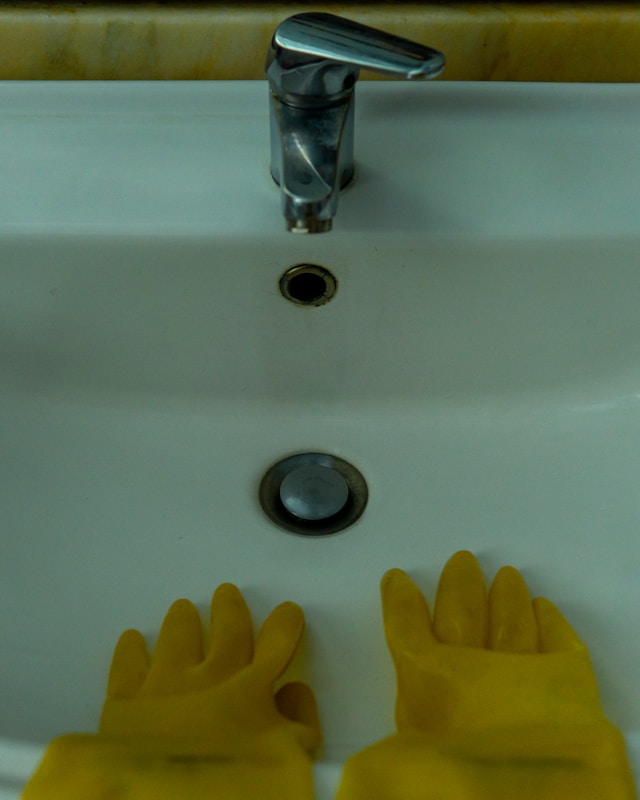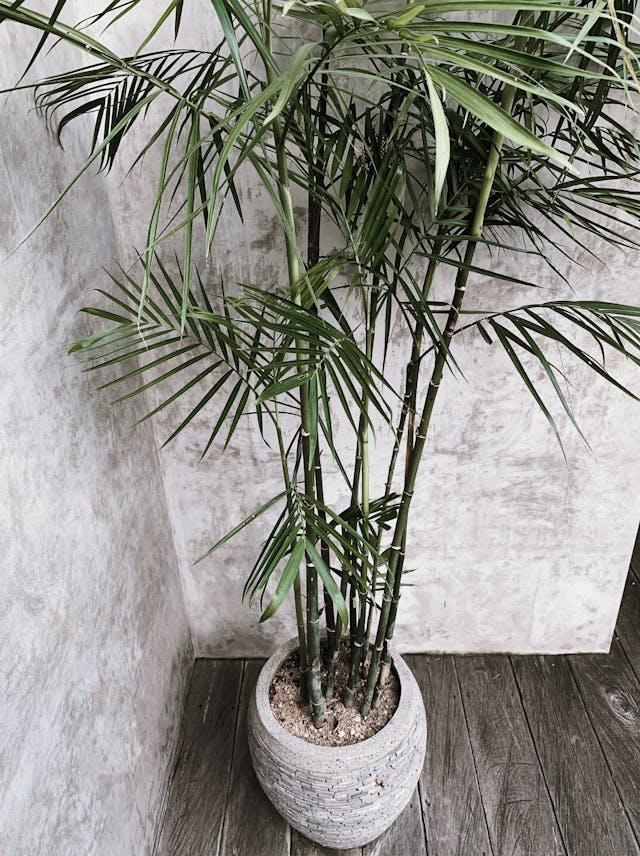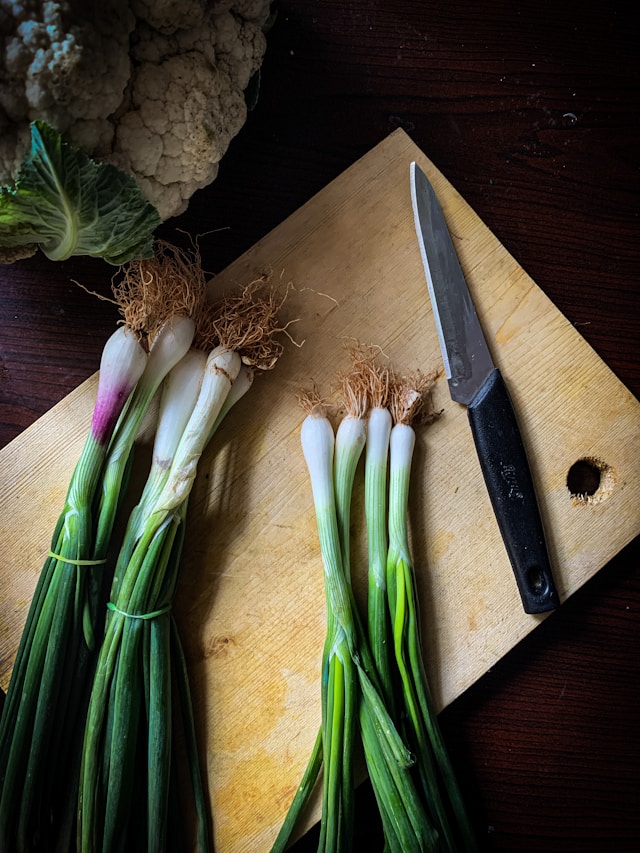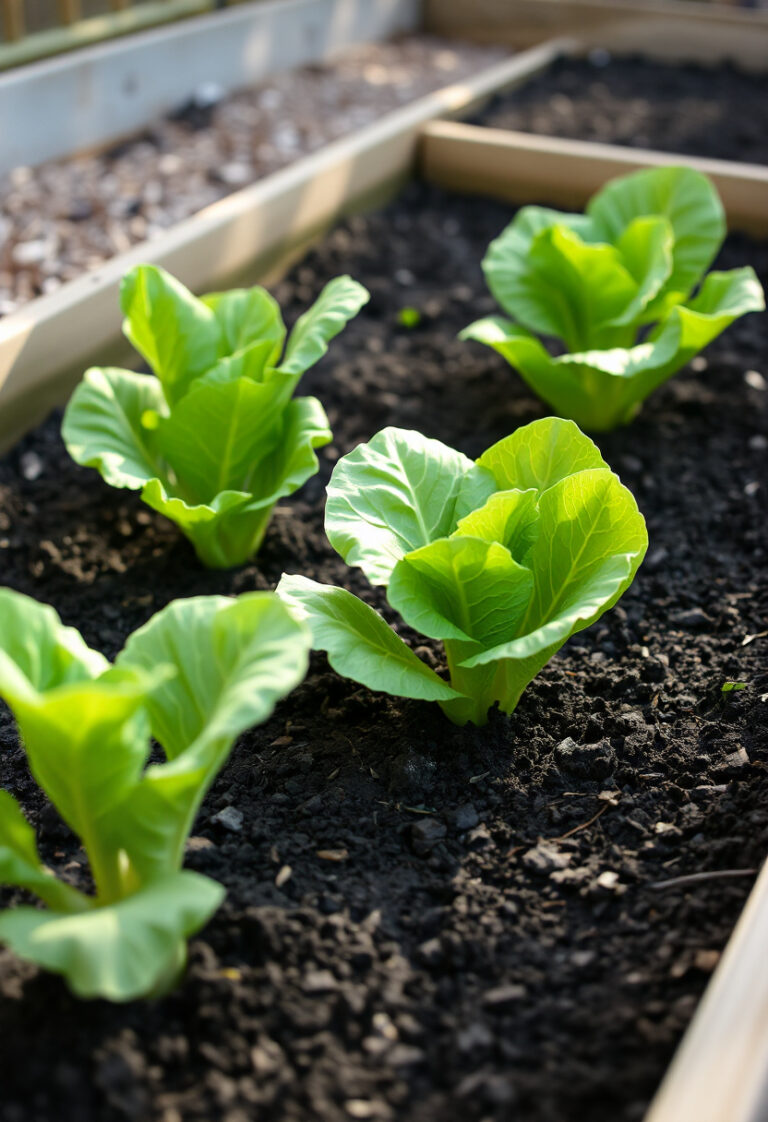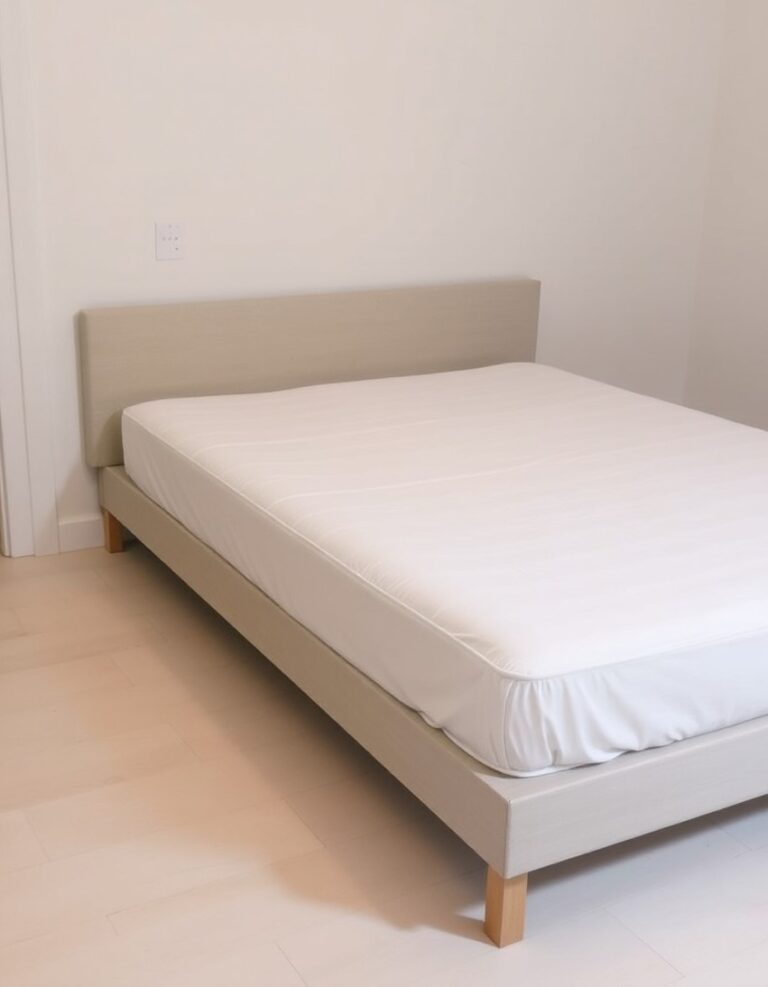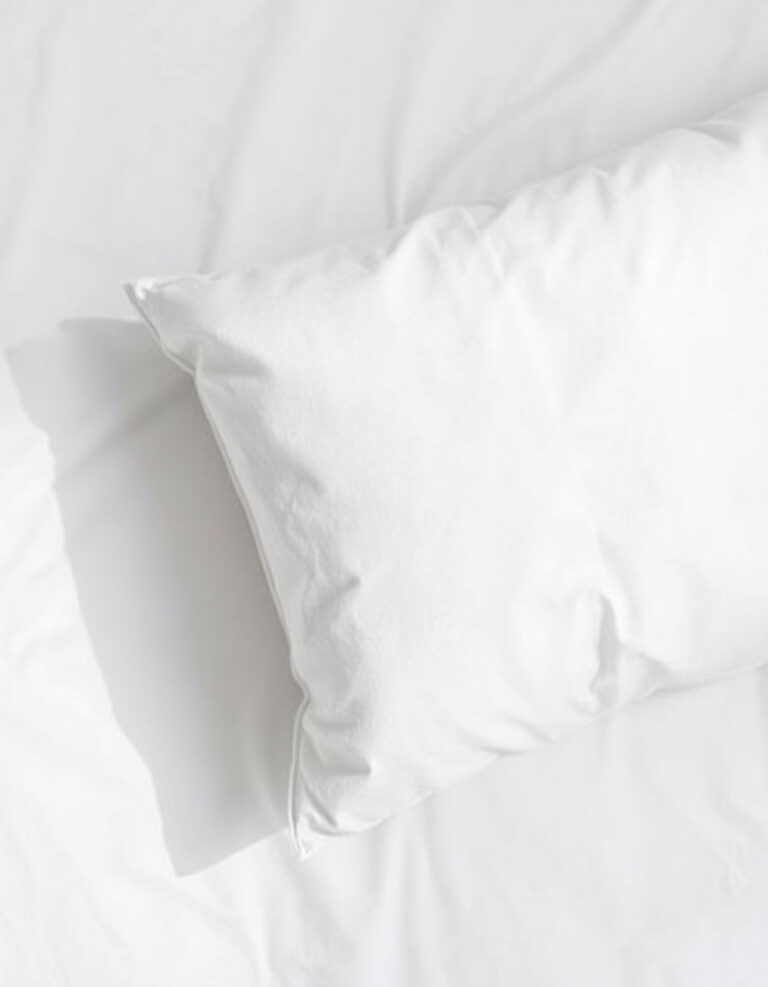
Creating an impressive outdoor space doesn’t require acres of land. With thoughtful planning and strategic design choices, even the most compact front yard can become an eye-catching showcase that enhances your home’s curb appeal. This guide explores 18 practical and stylish front yard landscaping solutions specifically tailored for smaller spaces.
Why Small Front Yard Landscaping Matters
The front yard serves as your home’s introduction to the world. For properties with limited square footage, effective landscaping becomes even more crucial. Well-executed small front yard landscaping not only maximizes available space but also creates a welcoming entrance that reflects your personal style while maintaining functionality.
Planning Your Small Front Yard Landscaping Project
Before diving into specific ideas, consider these fundamental planning principles:
- Assess your space carefully, noting sun exposure, soil conditions, and existing structures
- Establish priorities between aesthetics, maintenance requirements, and practical needs
- Choose a cohesive design theme that complements your home’s architecture
- Scale appropriately for your yard’s dimensions
- Consider seasonal changes to ensure year-round visual interest
Now, let’s explore specific front yard landscaping ideas tailored for smaller spaces:
1. Vertical Gardens: Growing Upward
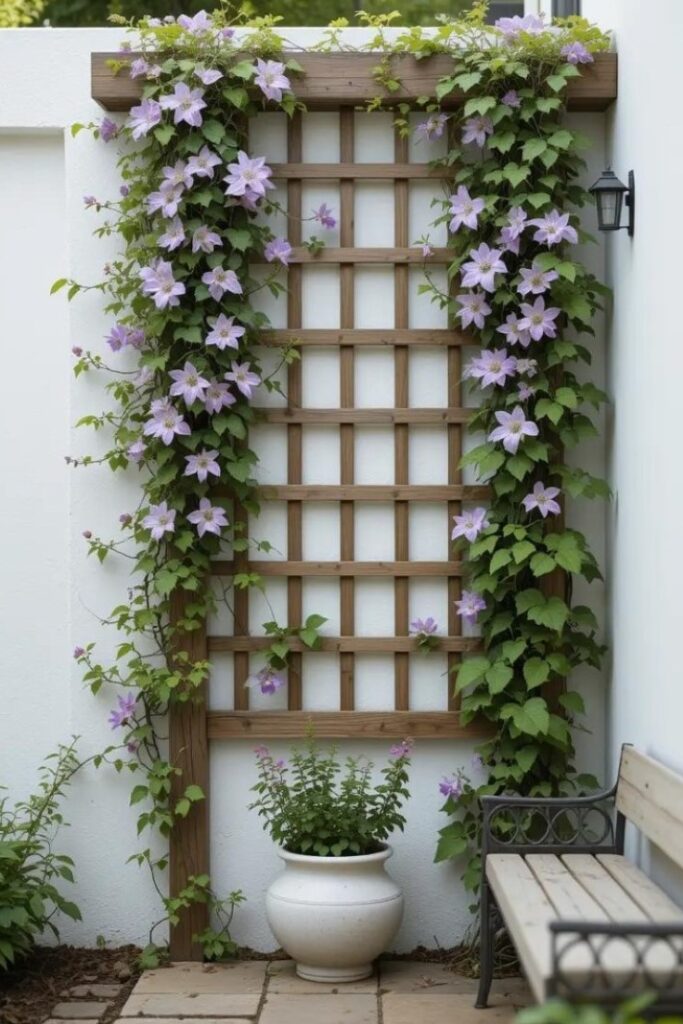
When horizontal space is limited, the solution is to think vertically. Vertical gardening techniques allow you to incorporate more greenery without consuming valuable ground space.
Implementation tips:
- Install trellises or wall-mounted planters
- Select climbing plants like clematis, jasmine, or ivy
- Consider modular vertical garden systems for herbs and small flowering plants
- Use sturdy fence panels as growing surfaces
This approach is particularly effective for narrow front yard spaces where traditional beds would feel cramped.
2. Multi-Level Landscaping
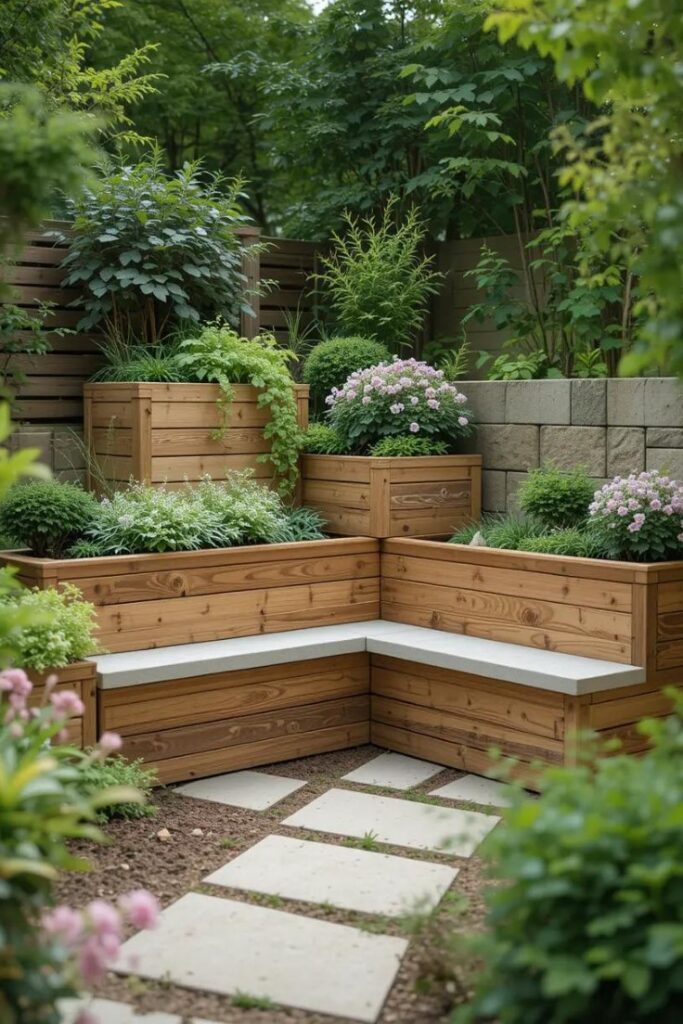
Creating different heights within your small front yard landscaping design adds visual intrigue while maximizing planting opportunities.
Consider incorporating:
- Raised garden beds at varying heights
- Tiered planters that step upward
- Low retaining walls that double as seating
- Elevated containers alongside ground-level plantings
This technique creates the illusion of more space while establishing distinct zones within your compact front yard.
3. Strategic Hardscaping Elements

Thoughtful hardscaping – the non-plant elements in your landscape – provides structure and function in small spaces.
Effective options include:
- A narrow, winding pathway using pavers or stepping stones
- A compact seating area with a small bench or bistro set
- Decorative stones or gravel in place of water-hungry lawn
When selecting materials, consider lighter colors that reflect light and create an open, airy feeling in your front yard landscaping.
4. Container Gardens for Flexibility

Containers offer unmatched versatility for small front yard landscaping, allowing you to:
- Rearrange designs seasonally
- Control soil conditions precisely
- Create instant focal points
- Incorporate plants that might otherwise be invasive
For maximum impact:
- Group containers of different heights
- Select containers that complement your home’s exterior
- Consider self-watering options for lower maintenance
- Mix flowering plants with structural foliage varieties
Containers work exceptionally well on porches, along walkways, and in areas where in-ground planting may be challenging.
5. Minimalist Plant Selection
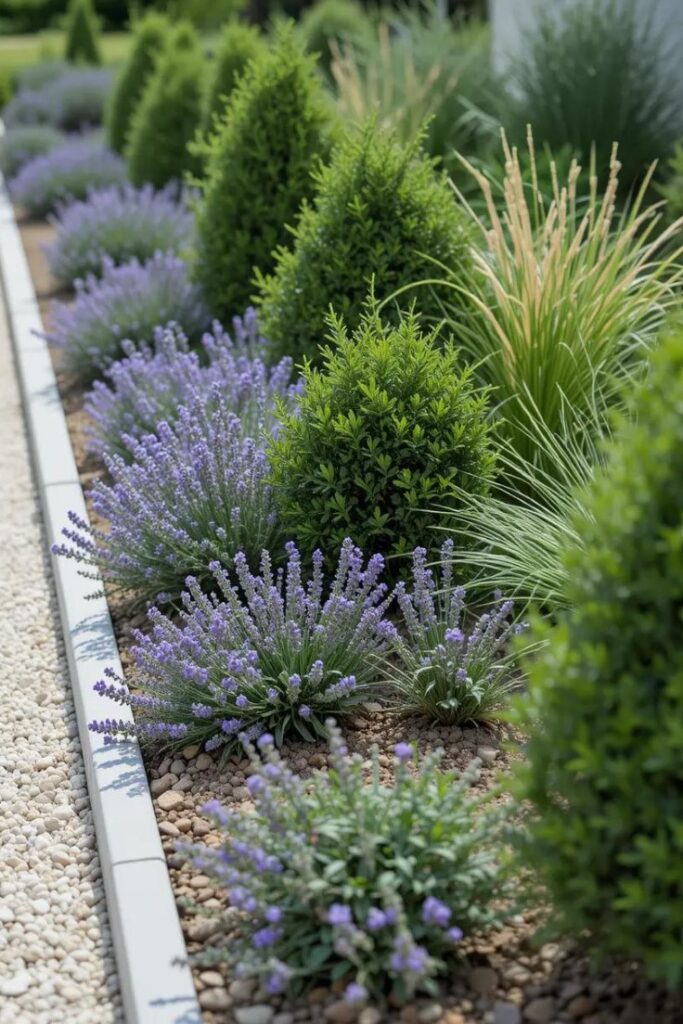
When space is limited, the “less is more” philosophy often yields the best results. Rather than cramming numerous plant varieties into your small front yard landscaping, select a focused palette.
Consider this approach:
- Choose 3-5 plant varieties and repeat them throughout the space
- Select specimens with multiple seasons of interest
- Incorporate plants with distinctive textures and forms
- Favor compact varieties bred specifically for smaller spaces
This strategy creates a cohesive, designed appearance rather than a cluttered collection of plants.
6. Low-Maintenance Ground Covers

Replacing traditional lawn with appropriate ground covers offers several advantages for small front yards:
- Reduced maintenance requirements
- Enhanced visual interest
- Improved erosion control
- Elimination of mowing in tight spaces
Excellent options include:
- Creeping thyme
- Sedum varieties
- Ornamental mosses
- Dwarf mondo grass
- Creeping jenny
These plants create a lush carpet effect while requiring minimal upkeep, making them ideal for compact front yard landscaping.
7. Defined Borders and Edging

Clear boundaries between different areas of your small front yard landscaping create organization and visual appeal.
Effective edging materials include:
- Steel or aluminum edging for clean, modern lines
- Natural stone for a more organic look
- Brick or concrete pavers for classic definition
- Low-growing border plants that maintain tidy boundaries
Well-defined edges not only look polished but also prevent garden beds from encroaching on pathways and other functional areas.
8. Water-Wise Design
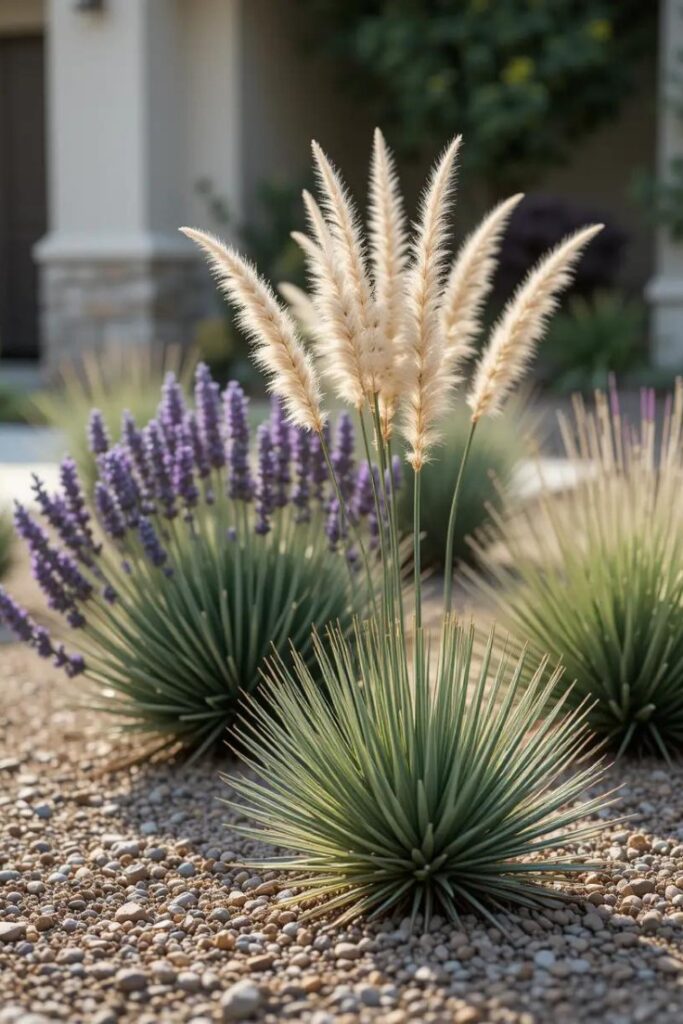
Small front yards benefit from water-efficient landscaping approaches that reduce maintenance while promoting sustainability.
Implementation strategies:
- Group plants with similar water needs
- Install drip irrigation for targeted watering
- Apply mulch to retain soil moisture and suppress weeds
- Select drought-tolerant native plants adapted to your region
This approach creates a responsible front yard that conserves resources while maintaining visual appeal.
9. Strategic Focal Points

Even the smallest front yard benefits from a carefully chosen focal point that draws the eye and anchors the design.
Effective options include:
- A specimen tree with interesting bark, foliage, or flowering habit
- A decorative garden feature
- A distinctive container planting
- An architectural feature like a small arbor or decorative gate
Position your focal point where it’s visible from both the street and your main entrance for maximum impact in your front yard landscaping.
10. Night-Friendly Lighting Design

Strategic landscape lighting extends the enjoyment and functionality of your small front yard into evening hours while enhancing security.
Consider incorporating:
- Solar path lights along walkways
- Uplighting for trees or architectural features
- Low-voltage spotlights to highlight plantings
- String lights for a festive atmosphere
Proper lighting not only improves safety but also creates dramatic nighttime scenes that highlight your front yard landscaping investments after dark.
11. Year-Round Structure with Evergreens

Compact evergreen shrubs and trees provide essential structure to small front yards throughout all seasons.
Suitable varieties include:
- Dwarf conifers like mugo pine or bird’s nest spruce
- Compact boxwood cultivars
- Little-leaf hollies
- Dwarf yews
These plants create a reliable framework for your front yard landscaping that remains intact even when deciduous plants are dormant.
12. Native Plant Communities
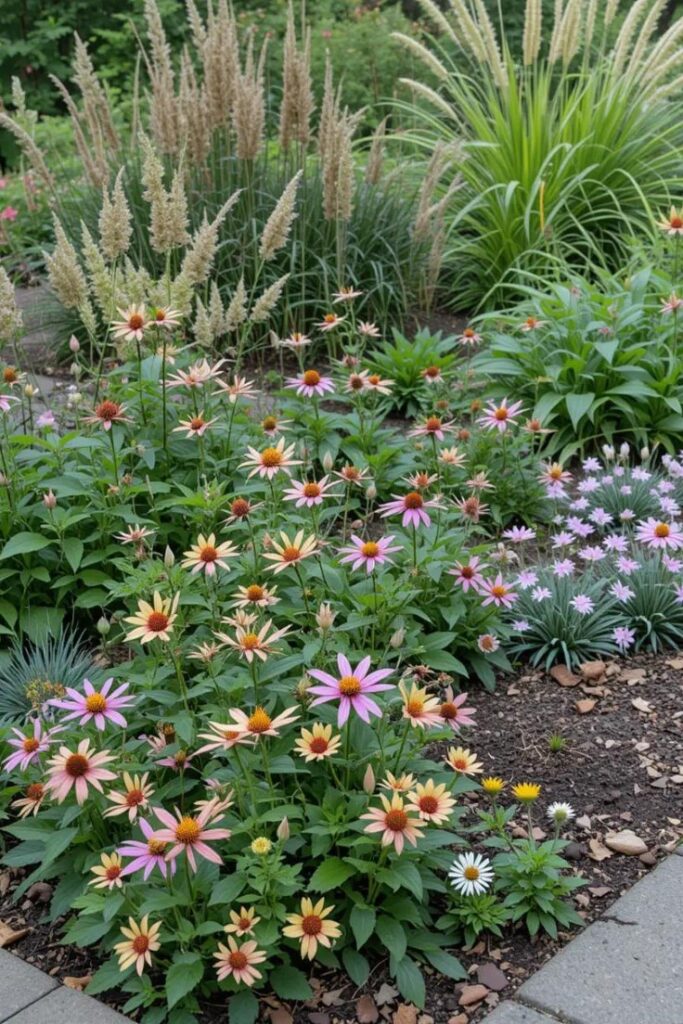
Incorporating regionally appropriate native plants into your small front yard offers numerous benefits:
- Reduced maintenance requirements
- Better adaptation to local climate conditions
- Support for local pollinators and wildlife
- Authentic connection to your regional landscape
Research which native species thrive in small spaces and group them according to their natural growing patterns for an ecological approach to front yard landscaping.
13. Seasonal Rotation Strategies

Maximize visual interest throughout the year by planning for sequential blooming periods and seasonal highlights.
Implementation approach:
- Plant spring bulbs beneath summer-flowering perennials
- Include plants with outstanding fall color
- Incorporate winter-interest plants with decorative bark or persistent berries
- Reserve small areas for seasonal annuals that can be changed quarterly
This strategy ensures your small front yard landscaping remains dynamic and interesting throughout the year.
14. Small-Space Lawn Alternatives
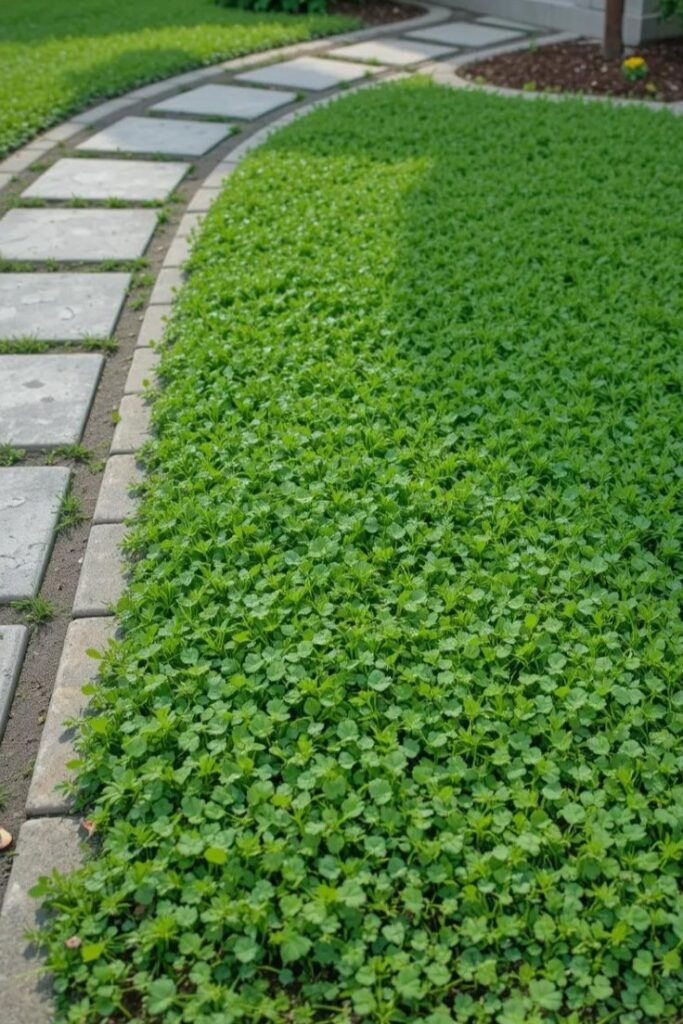
Traditional lawns often don’t make sense in compact front yards. Consider these grass alternatives that provide similar functionality with less maintenance:
- Microclover
- Buffalo grass
- Synthetic turf for high-traffic areas
- Low-growing sedges
- Permeable hardscaping with planted joints
These options create usable surfaces while reducing water consumption and maintenance demands in your front yard landscaping.
15. Symmetrical Designs for Small Spaces
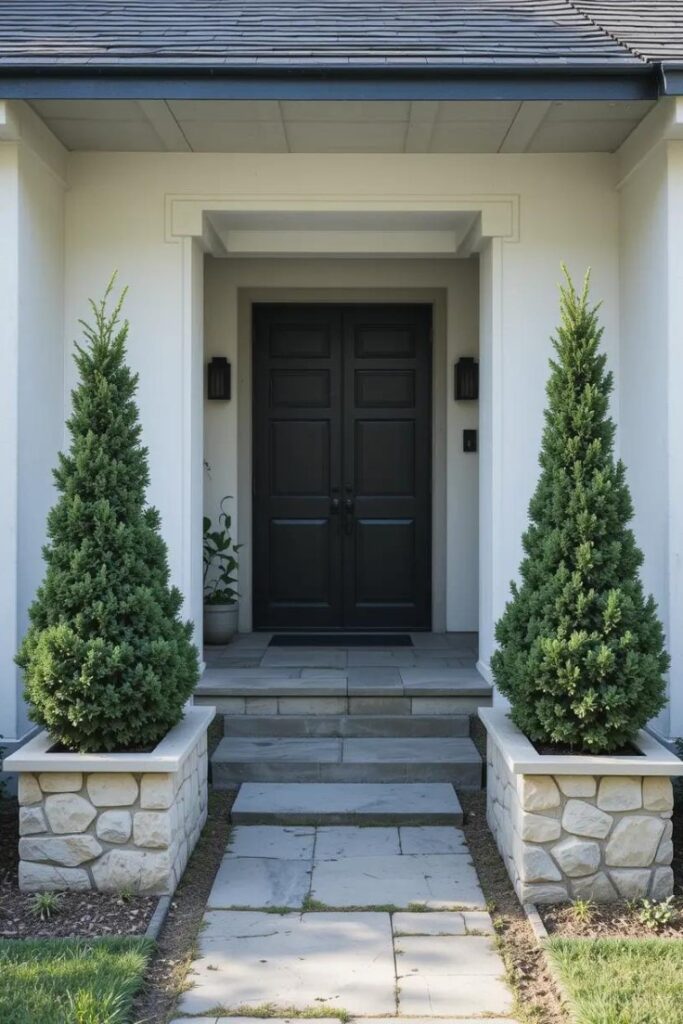
Symmetrical layouts often work exceptionally well in smaller front yards, creating a sense of order and intentionality.
Design principles to consider:
- Mirror plantings on either side of your entry path
- Use matching containers flanking your front door
- Create balanced bed shapes that repeat across the space
- Maintain consistent heights and forms in key locations
This approach lends a formal, organized appearance to your small front yard landscaping that feels purposeful rather than cramped.
16. Privacy Solutions

Even small front yards sometimes need strategic screening elements for enhanced privacy.
Effective approaches include:
- Columnar trees or shrubs that grow upward rather than outward
- Ornamental grasses that provide seasonal screening
- Trellises with climbing vines
- Decorative panels or lattice sections
These features add functional value to your front yard landscaping while maintaining an open, inviting atmosphere.
17. Smart Hardscaping Proportions
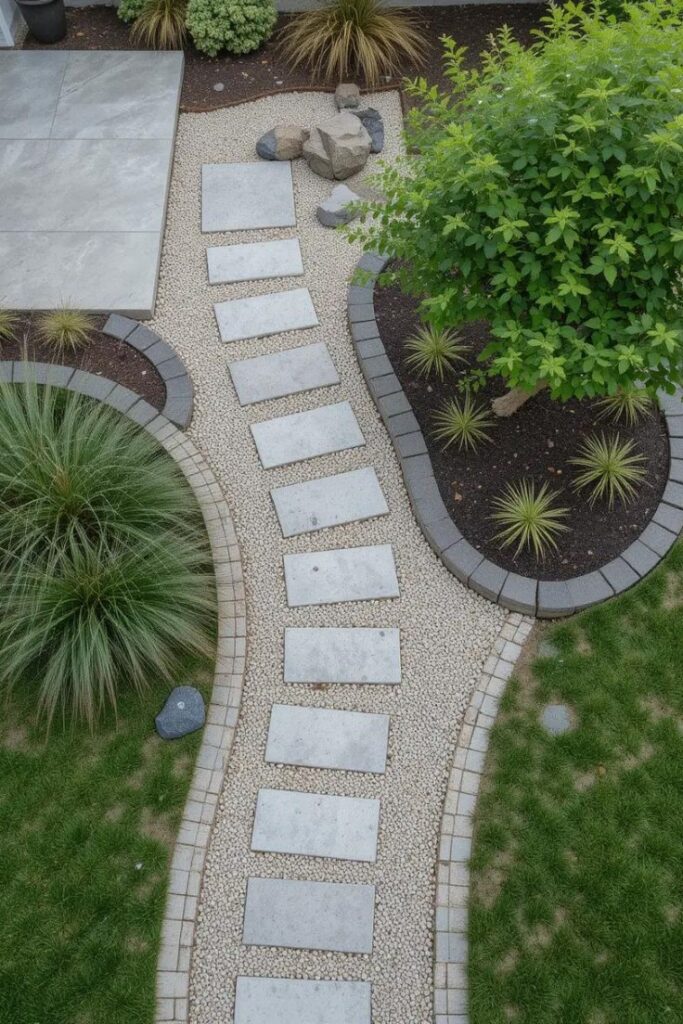
The ratio between planted areas and hardscaped surfaces significantly impacts how spacious a small front yard feels.
General guidelines:
- Limit pathway widths to 30-36 inches for secondary routes
- Choose smaller paver or stone units rather than large-format materials
- Incorporate curved rather than straight lines where possible
- Consider permeable surfaces that blend the line between hardscape and planted areas
These adjustments create a more generous-feeling space within your front yard landscaping.
18. Embracing Seasonality

Rather than fighting against seasonal changes, design your small front yard to celebrate each season’s unique characteristics.
Seasonal highlights might include:
- Spring: Flowering bulbs and early perennials
- Summer: Heat-tolerant bloomers and textural foliage
- Fall: Plants with outstanding leaf color and ornamental seedheads
- Winter: Evergreens, colored stems, and structural elements
This approach ensures your front yard landscaping remains engaging throughout the year while working with nature rather than against it.
Bringing It All Together: Implementation Tips
Creating successful small front yard landscaping requires thoughtful execution. Consider these final recommendations:
- Start with a scale drawing of your space before purchasing plants
- Phase your implementation if budget constraints exist
- Prioritize soil preparation for healthier, more vigorous plants
- Maintain appropriate plant spacing despite the temptation to overcrowd
- Document your plantings to track performance over time
Remember that the most successful small yards evolve gradually as you learn which plants and designs work best in your specific conditions.
Questions & Answers Section
How much should I budget for landscaping a small front yard?
For a complete small front yard renovation, budget between $8-15 per square foot, depending on your material choices and region. This typically translates to $4,000-7,500 for a modest-sized front yard. You can significantly reduce costs by doing some labor yourself or implementing changes in phases over multiple seasons.
What are the best low-maintenance plants for small front yard landscaping?
The best low-maintenance options for small front yards include compact evergreen shrubs (juniper, boxwood, holly), ornamental grasses (fescue, sedge), drought-tolerant perennials (sedum, yarrow, black-eyed Susan), and native plants adapted to your specific region. Choose plants that naturally stay small to avoid constant pruning.
How can I make my small front yard look bigger?
Create the illusion of more space by using a limited color palette (particularly cooler colors like blues and purples which recede visually), incorporating diagonal lines in your design, using appropriately scaled plants and furniture, adding mirrors or reflective surfaces strategically, and implementing multi-level plantings that draw the eye upward.
Should I remove all grass from my small front yard?
Not necessarily. While eliminating lawn can maximize planting space, a small, well-defined grass area can provide visual relief and practical functionality. Consider reducing grass to only the most useful areas or replacing traditional turf with lower-maintenance alternatives like microclover or fine fescue blends that require less water and mowing.
How do I balance aesthetics and functionality in front yard landscaping?
Prioritize clear pathways to your entrance and any other functional areas. Ensure plants won’t obstruct walkways when mature. Consider your maintenance capabilities realistically when selecting plants and materials. Choose elements that serve multiple purposes—like decorative boulders that also function as seating or steps. Finally, ensure your design accommodates practical needs like trash receptacles, mail delivery, and visitor parking.

